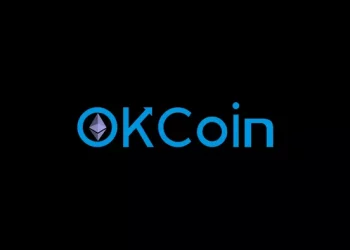In the evolving landscape of cryptocurrency exchanges, Coinbase has emerged as a prominent platform catering to both novice and seasoned investors alike. As users engage with cryptocurrencies through Coinbase’s intuitive interface, one crucial aspect that demands clarity is the miner fee. This fee plays a pivotal role in the transaction process, influencing speed, reliability, and cost efficiency. To navigate this terrain effectively, understanding the dynamics of Coinbase miner fees becomes essential.
Introduction to Miner Fees
Cryptocurrency transactions are facilitated on blockchain networks, decentralized ledgers maintained by a network of nodes. Miners, pivotal to these networks, validate transactions and secure the blockchain through computational work. As compensation for their efforts, miners receive transaction fees attached to each transfer of cryptocurrency.
Coinbase, one of the leading cryptocurrency exchanges globally, integrates these miner fees into its transaction process. Whether users are buying, selling, or transferring cryptocurrencies, miner fees ensure timely and secure processing of transactions.
The Role of Miner Fees
1. Transaction Prioritization and Confirmation
Miner fees influence the speed with which transactions are confirmed on the blockchain. Higher fees typically prioritize transactions, accelerating their inclusion in blocks and subsequent confirmation. This mechanism ensures that transactions are processed promptly, aligning with user expectations of efficiency.
2. Network Congestion Management
During periods of heightened blockchain activity, network congestion can occur, delaying transaction confirmations. Adjusting miner fees allows users to navigate these fluctuations effectively. By offering higher fees, users incentivize miners to prioritize their transactions, mitigating delays during peak periods.
3. Fee Structure and Transparency
Understanding the fee structure is crucial for users engaging with cryptocurrencies on Coinbase. Transparency regarding miner fees empowers users to make informed decisions, balancing cost considerations with transaction urgency.
Determinants of Coinbase Miner Fees
1. Blockchain Dynamics
Coinbase leverages various blockchain networks, each with distinct fee dynamics. Bitcoin, Ethereum, and other supported cryptocurrencies exhibit varying fee structures influenced by network congestion, transaction volume, and protocol specifications.
2. Fee Calculation Methodology
The calculation of miner fees on Coinbase incorporates several factors:
Network Conditions: Real-time assessment of blockchain congestion and transaction demand.
Transaction Size: Larger transactions typically incur higher fees due to increased data size.
Urgency: Users opting for faster confirmation times may choose higher fees to expedite transaction processing.
3. User Customization Options
Coinbase empowers users with flexibility in fee selection:
Dynamic Fees: Automatically adjusted based on current network conditions.
Custom Fees: Manual adjustment by users, tailoring fees according to individual preferences and urgency.
Understanding Coinbase’s Fee Structure
1. Comparative Analysis
Analyzing Coinbase’s fee structure in contrast to other exchanges provides insights into its competitive positioning. Factors such as base trading fees, withdrawal charges, and additional costs contribute to the overall cost of transactions on the platform.
2. Fee Transparency and Disclosure
Coinbase prioritizes transparency by disclosing fee structures comprehensively:
Clear Breakdown: Detailed fee schedules for trading, conversions, and external transactions.
Educational Resources: Guidance on fee implications, empowering users with actionable insights.
Practical Considerations for Users
1. Transaction Optimization Strategies
Navigating Coinbase miner fees effectively involves strategic considerations:
Fee Forecasting: Anticipating network conditions to optimize fee selection.
Fee Efficiency: Balancing cost-efficiency with transaction urgency through informed fee adjustments.
2. Fee Management Tools
Coinbase integrates tools to enhance user experience:
Fee Estimation: Real-time fee predictions based on network activity.
Transaction Monitoring: Insights into fee impact on transaction processing and confirmation.
Case Studies and User Experiences
Examining real-world scenarios offers valuable perspectives:
High-Volume Trading: Strategies for minimizing transaction costs during intensive trading periods.
Cross-Border Transactions: Fee implications and considerations for international transfers.
Cryptocurrency Diversification: Optimal fee strategies when diversifying cryptocurrency portfolios.
Regulatory Landscape and Compliance
1. Compliance Framework
Coinbase adheres to regulatory guidelines governing fee disclosures and transaction transparency:
Regulatory Compliance: Alignment with global standards on fee transparency and consumer protection.
User Protection: Safeguards against fee manipulation and unauthorized charges.
2. Industry Standards
Benchmarking Coinbase’s fee practices against industry standards ensures alignment with best practices:
Ethical Fee Practices: Upholding integrity in fee structures and consumer trust.
Advocacy: Participation in industry initiatives promoting fee transparency and regulatory compliance.
Future Trends and Innovations
1. Technological Advancements
Emerging technologies influence fee dynamics:
Layer 2 Solutions: Integration of scaling solutions minimizing transaction costs and enhancing speed.
Smart Contract Innovations: Fee optimizations through advanced contract functionalities.
2. Market Evolution
Dynamic market conditions shape fee strategies:
Competitive Pressures: Evolving fee structures amid competitive exchanges.
User-Centric Innovation: Feedback-driven enhancements improving fee customization and efficiency.
Conclusion
Navigating Coinbase miner fees involves understanding their role in transaction processing and optimizing fee strategies to align with individual preferences and market conditions. As Coinbase continues to innovate and adapt to evolving blockchain dynamics, transparency and user empowerment remain central to its fee practices. By fostering a comprehensive understanding of miner fees, Coinbase enhances user confidence and operational efficiency in the cryptocurrency ecosystem.
Related topics:

















